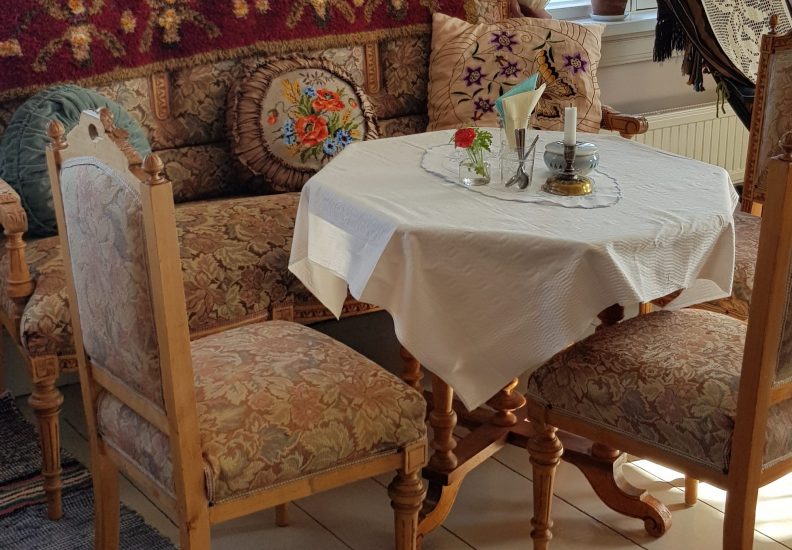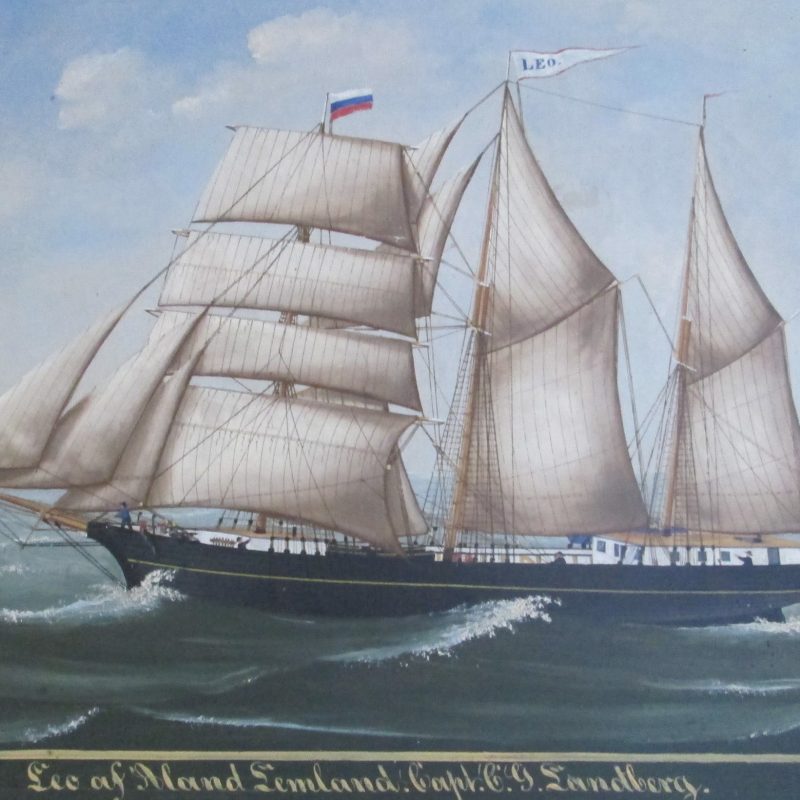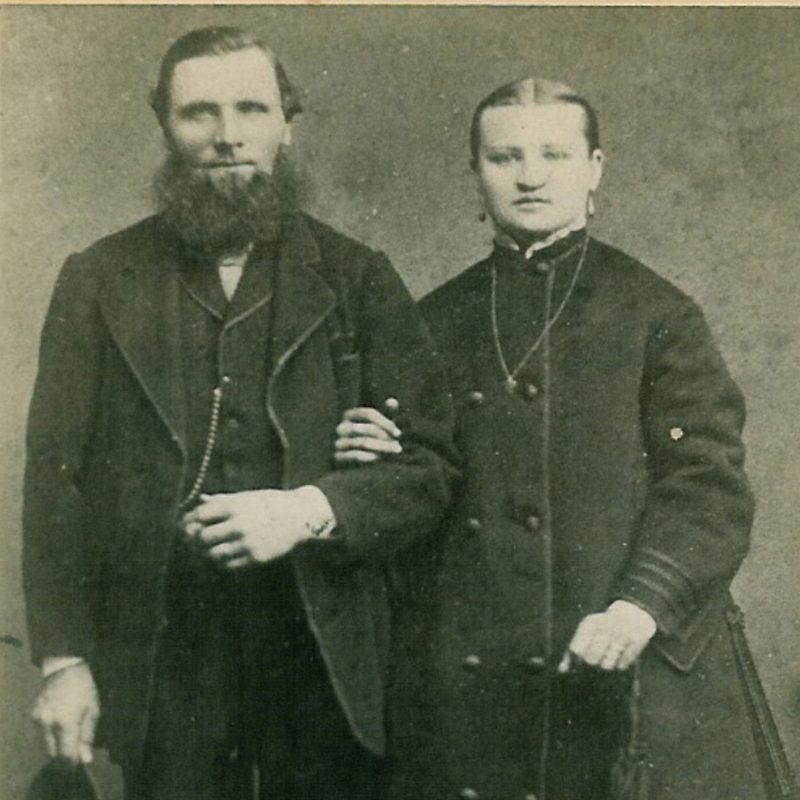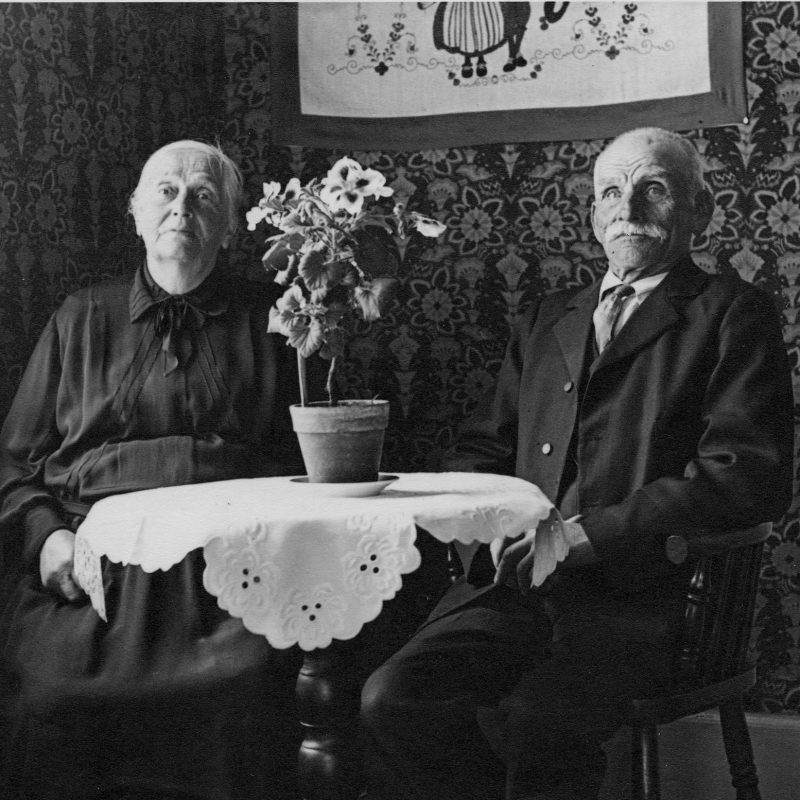Main room

Main room
The main room is the house’s living room, where the museum’s café is located nowadays. In the same corner, where the tall steel-cased stove now stands, used to be a big wood-burning stove. The main room and kitchen were the most frequently used rooms, where people worked and socialised....
The big dark brown cupboard and big gateleg table in the middle of the room have practically always been at Pellas, as they were here before the fire. The wall rug is originally from the neighbouring farm of Hansas, where Petter’s daughter, Erika, moved after getting married. The big portrait on the wall portrays Erika and her husband, Carl Gustaf Lundberg. August and Irene Eriksson are depicted in the smaller coloured portrait. August and Erika were siblings. Signe Signell from Norrby, Lemland, made the painting of the Lemland church.
The Kalle sculpture of a small boy on top of the escritoire was saved from the fire. Earlier, the sculpture was placed on the mantelpiece, and it is one of Pellas’ old objects, full of traces of fire. The floral furniture was a gift to the museum from one descendant of Pellas. The furniture with a brown floral pattern was at Pellas before the fire and belonged to Rey Eriksson. Swedish artist Rikard Lindström made the portrait of a big ship. The model and portrait of the Heimo vessel are gifts to Pellas. On top of one of the escritoires are wedding photographs of Pellas offspring who have gotten married at Pellas. On top of another escritoire are portraits and photographs of other Pellas offspring, including Sven and Pamela Eriksson. An old crank telephone hangs on the south wall. Pellas was one of the first households in Lemland to have a phone.
We had not been more than a few days returned, when invitations to visit various outlying groups arrived, invariably by telephone, which all “Ålännings” use with nonchalant relish for entertainment and social intercourse. No Åland telephone lacks its chair for the user. At pellas, the most comfortable chair in the room was beside the telephone. In this sitting relaxed and attentive, “Farmor” had almost daily contact with several of her children and grandchildren, and with one or other of her sisters: “Hinders Amelia”, “Sjustrands Nanni”, or “Moster Ida from Lemström”
Pamela Eriksson in her book The Duchess: The Life and Death of the Herzogin Cecilie.




